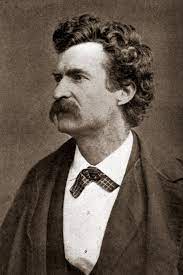
By Mary Hoar, City of Yonkers Historian, President Emerita Yonkers Historical Society, recipient of the 2004 Key to History, and President Untermyer Performing Arts Council
Monday, December 5th
December 5, 1905: A large number of men and women from Yonkers attended a dinner at Delmonico’s, honoring Mark Twain on his seventieth birthday. Twain had lived in Yonkers for a year at at 523 Riverdale Avenue.
December 5, 1917: City Hall was bombarded with complaints about trash not being collected. The Commissioner of Public Works was blamed; shortly after the election, he said he did not have money to pay men for the rest of the year, so dismissed all the workers and teams in his department. John Fry, President of the Real Estate Board of the Chamber of Commerce, stated that conditions had gotten so bad it was “becoming a menace to public health.”
Tuesday December 6th
December 6, 1905: Harper Brothers, after purchasing Metropolitan Magazine and the Daily Telegraph, appointed John Kendrick Bangs of Yonkers its editor.
December 6, 1918: Former President William Howard Taft visited Yonkers and spoke at the British Day Celebration Committee meeting held at the new Armory on North Broadway.
December 6, 1935: Head Librarian Grinton Will was notified approval of a third mural for the Yonkers Public Library Children’s Room was given by the Works Progress Administration. The mural was to be painted by Yonkers artist David Hutchinson who created the two already installed in the Children’s Room. One of the murals currently is on display at Will Library on Central Park Avenue; the others are in storage.
Wednesday December 7th
December 7, 1867: Yonkers resident Charles Thompson demonstrated and promoted a cable-driven passenger railway, the West Side and Yonkers Patent Railway.
December 7, 1909: Leo Baekeland patented Bakelite, the first thermosetting plastic.
December 7, 1926: Mayor William Walsh announced he wanted the Common Council to change the name of Trevor Park; he wanted it named after a “more direct benefactor to the city.”
Thursday, December 8th:
December 8, 1922: Although told by the State Prison Commission they needed to upgrade our city jail or build a new one, City officials appeal before them to explain why they could not. Their excuse was the extensive school building program Yonkers had adopted to the tune of $3,000,000. After listening to the arguments of Mayor Taussig and Corporation Counsel Lewis, Commission President Thomas Kennedy ruled the new jail could be deferred… temporarily.
December 8, 1950: Lieutenant Colonel Douglas Crier passed away. He served our country twice, once as a young man in the World War and the second during WW II, when he was appointed commander of the 23rd internal security Battalion. At the time of his passing, he not only was President of the NAACP, he was the Yonkers City Court Bookkeeper in charge of collecting fees.
Friday, December 9th:
December 9, 1936: Yonkers WPA workers anxiously waited confirmation of the rumor that WPA Administrator Harry Hopkins had stopped the wholesale dismissals of program workers throughout the country. Hopkins had a Yonkers connection; his sister Adah Hopkins Aime lived on Hawthorne Avenue and had served as Executive Secretary of the Yonkers Red Cross.
December 9, 1947: The Yonkers Common Council changed zoning on city-owned property in the western portion of the former Untermyer estate, hoping to tighten building restriction. The move changed zoning from an “S” to an “S-1,” increasing the size of a residence to 10,000 square feet. This followed a recommendation of the City Planning Board to maintain the “open character of the property retained as much as possible.”
Saturday, December 10th:
December 10, 1924: Workmen excavating on McLean Avenue near Harding Avenue unearthed two skulls believed to be those of Native Americans. Historians.
at the time believed the skulls belonged to members of Chief Nimham’s tribe, who assisted the American forces against the British.
December 10, 1936: Author Charles Driscoll of Park Hill, an authority on Pirate Lore, sent out his pirate-theme Christmas cards with a bit of “spice.” A vocal member of the defunct First National Bank of Yonkers’ Depositors Committee, his card showed one pirate forcing two others to walk the plank, with the legend on the back, “…. The approach of the holy season of Christmas always reminds me that ten million of us were robbed of our savings in March 1933.”
Sunday, December 11th:
December 11, 1949: Colonial Heights’ William C. Handy, universally recognized as the “Father of the Blues,” edited and updated a book he published in 1926. “A Treasury of the Blues… Complete Words and Music of 67 Great Songs from Memphis Blues to the Present Day” contained pieces “simply arranged in convenient keys for the average singer and pianist.”
December 11, 1955: Yonkers soon would have its first bank office in a railroad station! The First National Bank announced it would open a branch in the New York Central Railroad’s Yonkers Station west of Larkin Plaza. You still can see the initials on the kiosk the bank used.
Questions or comments? Email YonkersHistory1646@gmail.com.
For information on the Yonkers Historical Society, Sherwood House and upcoming events, please visit our website www.yonkershistoricalsociety.org, call 914-961-8940 or email yhsociety@aol.com.





